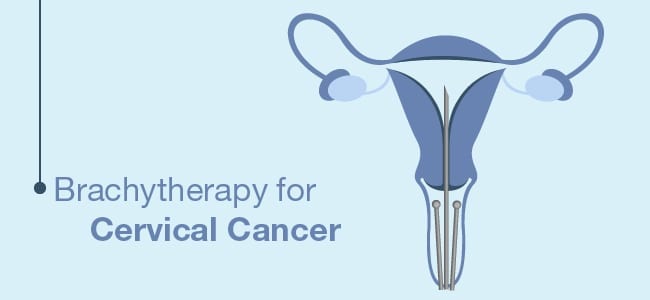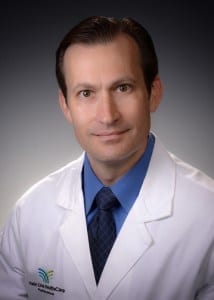
SGO/ABS review of brachytherapy for cervical cancer
Christine Rojas wins run-off election for Fellow-in-Training Board member
2019 SGO Annual Meeting breaks attendance for fifth year in a row
Coding Corner: Medicare rules for teaching hospitals | David Holtz, MD
In memoriam: Howard W. Jones III, MD
SGO 50th Anniversary Interview: Gregory M. Gressel, MD
SGO/ABS review of brachytherapy for cervical cancer
 The March editions of Gynecologic Oncology and the journal Brachytherapy have published Brachytherapy: A critical component of primary radiation therapy for cervical cancer for the Society of Gynecologic Oncology (SGO) and the American Brachytherapy Society (ABS) by Christine H. Holschneider, Daniel G. Petereit, Christina Chu, I-Chow Hsu, Yevgeniya J. Ioffe, Ann H. Klopp, Bhavana Pothuri, Lee-may Chen, and Catheryn Yashar. The authors found a decline in brachytherapy has been associated with negative impacts on survival in the era of modern External Beam Radiation Therapy (EBRT) techniques. The key findings were as follows:
The March editions of Gynecologic Oncology and the journal Brachytherapy have published Brachytherapy: A critical component of primary radiation therapy for cervical cancer for the Society of Gynecologic Oncology (SGO) and the American Brachytherapy Society (ABS) by Christine H. Holschneider, Daniel G. Petereit, Christina Chu, I-Chow Hsu, Yevgeniya J. Ioffe, Ann H. Klopp, Bhavana Pothuri, Lee-may Chen, and Catheryn Yashar. The authors found a decline in brachytherapy has been associated with negative impacts on survival in the era of modern External Beam Radiation Therapy (EBRT) techniques. The key findings were as follows:
- Decline in brachytherapy parallels increase in Intensity Modulated Radiation Therapy and Stereotactic Body Radiotherapy (IMRT/SBRT) boosts.
- Less brachytherapy is coupled with increased mortality.
- CT/MRI adaptive brachytherapy is preferred.
- If coordinated, EBRT & brachytherapy can be delivered at different institutions without compromising outcome.
Dr. Holschneider explained that the standard of care for the curative radiation treatment of cervical carcinoma is EBRT with concurrent chemotherapy followed by brachytherapy, with completion of all therapy within an eight-week window. Brachytherapy as a subspecialty of Radiation Oncology has further evolved over the last several years and advances have allowed improvement in cure and control, and decreases in toxicity.
“There have been several publications that have demonstrated an alarming decrease in brachytherapy use for the curative treatment of cervical cancer, associated with a subsequent unnecessary increase in mortality,” she said. “This decline in brachytherapy has paralleled the increased use of external beam technologies, such as intensity modulated radiation therapy and stereotactic body radiotherapy, for boosting the primary disease in lieu of brachytherapy, despite lack of evidence that these substitutions are equivalent or superior.
“While patients treated at low-volume, non-academic centers, and those who are un- or underinsured are most likely to not receive brachytherapy, the lower use of brachytherapy is observed at many centers and in many settings, including Commission on Cancer approved Cancer Centers, as illustrated by the fact that in 2015, only 67.5 percent of all Commission on Cancer-approved programs were compliant with the standard use of brachytherapy in patients treated with primary radiation with curative intent for cervical cancer.”
Dr. Holschneider added that few practitioners have the training and ongoing exposure to cervical cancer cases to ensure their expertise and competency in providing brachytherapy for cervical cancer.
“With improved screening and treatment of preinvasive and early invasive disease, the incidence of cervical cancer has decreased significantly since the 1950s,” she said. “According to American Cancer Society statistics, in 2019 about 13,170 new cases of invasive cervical cancer will be diagnosed in the US. If detected at an early stage, many of those cases can be cured with surgery and do not require radiation. This trend in cancer incidence contributes to the relatively low number of primary cervical cancer cases for many radiation oncology providers.”
Currently, it appears that nearly two thirds of cervical cancer patients start their treatment in facilities that treat three or fewer eligible cervical cancer patients and only 8 percent of U.S. facilities treat more than three patients with primary radiation treatment for cervical cancer annually.
Dr. Holschneider explained that radiation oncologists administer brachytherapy and place the radiation therapy applicators. They receive the training to perform brachytherapy, but many have a relatively low volume of cervical cancer cases and do not have a lot of experience with brachytherapy for cervical cancer. Gynecologic oncologists at times help facilitate brachytherapy applicator placement.
The American Board of Radiology (ABR) and the American Brachytherapy Society (ABS) are aware that many newly trained radiation oncologists do not have significant cervical cancer brachytherapy experience and have put forth a series of efforts to improve this situation. In order to bolster brachytherapy training and expertise beyond the proctoring available at the practitioner’s institution, the ABS has conducted several successful GYN schools to offer brachytherapy training and implement MRI-guided brachytherapy. Other options to enhance exposure include completing an ABS “fellowship” offered at select institutions. Further, the ABR implemented a Focused Recognition in Brachytherapy in 2011, as there are no Accreditation Council for Graduate Medical Education (ACGME) approved brachytherapy fellowship programs. If none of these options are feasible, patients should be referred to a higher volume GYN center with brachytherapy expertise. Careful alignment and coordination is required if treatment is to be accomplished at two different institution for external beam radiation and brachytherapy in order to maintain total treatment time within 8 weeks, and gynecologic oncologists can also play a role in making early referrals to help coordinate care.
“This publication is a joint effort by the Society of Gynecologic Oncology and the American Brachytherapy Society to remind all who are entrusted with the care of these patients of the published literature and the standard of care expected to afford the best chance of cure, with the least expected side effects,” said Dr. Holschneider. “We hope to highlight the scope of the problem with regard to declining rates of brachytherapy use and serve as a call to action to improve the care for women with cervical cancer.”
Christine Rojas wins run-off election for Fellow-in-Training Board member

Christine Rojas, MD
The Society of Gynecologic Oncology congratulates Christine Rojas, MD, from Walter Reed National Military Medical Center Bethesda in Vienna, VA, as the winner of the run-off election for Fellow-in-Training Representative on the 2019-2020 Board of Directors. Her term with the new SGO Board begins immediately.
2019 SGO Annual Meeting breaks attendance for fifth year in a row
 For the fifth year in a row, the Society of Gynecologic Oncology broke an attendance record with a total of 2,541 attendees at the 2019 SGO Annual Meeting on Women’s Cancer in Honolulu, HI, March 16-19. Photos from the 50th SGO Annual Meeting have now been uploaded to SGO’s Flickr account and can be downloaded directly from the page. A full list of abstracts and late-breaking abstracts is available on the SGO50.org website; all abstracts will be published in an online supplement to the journal Gynecologic Oncology in late June. The website also includes SGO news releases and additional coverage from the meeting.
For the fifth year in a row, the Society of Gynecologic Oncology broke an attendance record with a total of 2,541 attendees at the 2019 SGO Annual Meeting on Women’s Cancer in Honolulu, HI, March 16-19. Photos from the 50th SGO Annual Meeting have now been uploaded to SGO’s Flickr account and can be downloaded directly from the page. A full list of abstracts and late-breaking abstracts is available on the SGO50.org website; all abstracts will be published in an online supplement to the journal Gynecologic Oncology in late June. The website also includes SGO news releases and additional coverage from the meeting.
Attendees of the 2019 SGO Annual Meeting on Women’s Cancer are encouraged to fill out their online course evaluation forms in order to receive Continuing Education (CE) credit. The deadline for claiming CE credit is Friday, May 24, 2019, at 11:59 p.m. EST. For technical issues with the CE site, please send questions to SGO@confex.com. For other general 2019 Annual Meeting education programming questions, email education@sgo.org.
Coding Corner: Medicare rules for teaching hospitals | David Holtz, MD

David Holtz, MD
“I have a PA assist me at the bedside during my robotic cases, and a resident wants to come in to learn on the console. The hospital pays the PA – what can we do so the hospital can still bill for the PA?”
Medicare has specific rules for teaching hospitals regarding surgical assistance. The Centers for Medicare & Medicaid Services (CMS) provides teaching hospitals with money to compensate for resident salary and time and they want to avoid paying for an assistant on top of those budgeted amounts. Medicare is also required by statute to pay for care that is “reasonable and necessary”. The Medicare Physician Fee Schedule Database (MPFSD) lists if assistant at surgery services are allowed for a given CPT code. The MPFSD can be accessed online.
Private insurers generally follow Medicare rules, but not uniformly, so you should check with the plans individually on an annual basis.
It is not enough to simply state that an assistant was at surgery in your operative note. To bill for an assistant, the surgeon has to indicate what role the assistant at surgery performed: prepping the patient, manipulating the uterus, swapping instruments, etc. If you are at a teaching institution you must also indicate why a resident was not available. They could be unavailable due to educational responsibilities, or a resident of the appropriate skill level might not be available. The residents at my institution do not go through a bedside assistant training program, and I indicate in my operative note specifically that no resident trained as a bedside assistant was available.
Proper modifiers then must be submitted with the CPT codes to indicate that a call assistant was required and that no qualified resident was available.
Modifier 82 indicates that the procedure was performed requiring the presence of an assistant surgeon when a qualified resident surgeon was not available. In teaching hospitals, special requirements must be met to allow billing for an assistant surgeon, and modifier 82 is typically used in those instances. Check with your Medicare carrier for details.
Modifier AS-Assistant at Surgery- should also be used to indicate a physician assistant, nurse practitioner, or clinical nurse specialist services for assistant at surgery.
Documentation required in the medical record:
- A statement that no qualified resident was available to perform the service, or
- A statement indicating that exceptional medical circumstances exist, or
- A statement indicating the primary surgeon has an across-the-board policy of never involving residents in the preoperative, operative, or postoperative care of his/her patients.
Let us assume that you are doing a relatively common procedure in the world of gynecologic oncology: a robotic hysterectomy, bilateral salpingo-oophorectomy, and sentinel lymph node biopsy for endometrial cancer. The procedure codes (58571 for TLH/BSO, 38570 for laparoscopic lymph node sampling, 38900 for dye injection) all allow for an assistant at surgery. The procedure code modifier as -82 and-AS would be appended to each of these CPT codes. A notation of why a qualified resident was not available, as well as an indication of what the surgical assistant performed, should be placed in the surgical operative note. Be prepared to send documentation to the insurance company.
A thorough discussion of these rules can be found at the CMS website.
David Holtz, MD, is a gynecologic oncologist at Lankenau Hospital in Wynnewood, PA.
In memoriam: Howard W. Jones III, MD

Howard W. Jones III, MD
Howard W. Jones III, MD, the Betty and Lonnie S. Burnett professor of Obstetrics and Gynecology at Vanderbilt University Medical Center in Nashville, TN, died peacefully in his sleep on Saturday, March 9, at the age of 76. Dr. Jones was the former Director of the Vanderbilt Division of Gynecologic Oncology and Chairman of the Obstetrics and Gynecology Department.
Dr. Jones received his B.A. degree from Amherst College in Amherst, MA, where he was named an All American Lacrosse player, then received his M.D. degree from Duke University in Durham, NC. Howard completed his Residency in Obstetrics and Gynecology at the University of Colorado Medical Center in Denver and, in 1974, completed a fellowship in gynecologic oncology at MD Anderson Hospital and Tumor Institute in Houston, TX.
From 1974 to 1976, Dr. Jones served his country as a Major in the United States Army where he was the Chief of Gynecologic Oncology at William Beaumont Army Medical Center in El Paso, TX. Following his service in the Army, Dr. Jones became an Assistant Professor in the Department of Obstetrics and Gynecology at the University of California, San Francisco, CA before accepting an offer to be the Director of the Vanderbilt Gynecologic Oncology Division, a position he held until accepting the position of Chairman of the Obstetrics and Gynecology Department in 2009.
During his 39 years at Vanderbilt, Dr. Jones distinguished himself in every arena of academic medicine including clinical care of patients, education and research. He authored numerous scientific publications including 56 peer review articles, 23 chapters in textbooks as well as co-editing 6 major medical textbooks and was Editor-in-Chief of the prestigious Obstetrical and Gynecological Survey from 1992 until 2009.
Dr. Jones had a special interest in precancers and cancers of the cervix and was heavily involved with the development of various techniques for cervical cancer screening. He was the “go to” physician on issues related to gynecologic cancer and had a large clinical practice at Vanderbilt. His patients uniformly appreciated his expert, thoughtful, kind and compassionate care. Frank Boehm, MD, a colleague and friend for 39 years said of Dr. Jones, “He was one of the finest physicians I have ever known. He was a gift to the field of medicine.”
Howard loved to teach and was truly a great teacher of the science and art of medicine. A colleague and former student, Bruce Beyer, MD, Director of 100 Oaks Women’s Center said “When I operated with Dr. Jones as a Resident, he made me feel as if I was a great surgeon while still teaching me the intricacies of pelvic surgery. He had a special gift of teaching, making you enjoy every moment of the experience. It was an honor to be his student and he helped me as well as hundreds of other residents become the very best in the field of gynecology.”
In addition to his role at Vanderbilt, Dr. Jones was active in national and international organizations and served as president of numerous prestigious Obstetrics and Gynecology societies. He was also active in his Nashville community serving on the Board of Directors of Alive Hospice of Nashville, the Nashville-Davidson County American Cancer Society, and Boy Scouts of America. Dr. Jones’ love of Scouting began when he was a young boy, eventually rising to become an Eagle Scout. Steve Entman, MD, Professor Emeritus and former Chair of the Department of Obstetrics and Gynecology from 1995 to 2005 stated that “Howard embodied all the noble characteristics of the Boy Scout motto and pledge. He was truly an honorable man.”
Dr. Jones revealed his dedication and commitment to Vanderbilt Medical Center by accepting the role of Chair of the Obstetrics and Gynecology Department in 2009, a time of challenge for the department. Under his guidance, deliveries at Vanderbilt rose from 2,500 to 4,500 per year and the number of full time faculty positions rose from 35 to 72. In addition, in 2008, the number of annual outpatient visits rose from 42,800 to more than 100,000. Boehm noted that “He really made the department into what it is today. His leadership and people skills created an environment where people worked together as a team. He was a credit to the medical profession”.
Marta Crispens, MD, current Director of Gynecologic Oncology and Dr. Jones’ successor stated that “Howard Jones touched so many lives, his patients, students, residents, nurses, staff and faculty. He was a mentor to hundreds and was loved and respected by all who worked with him. He was a tremendous role model. I loved him as teacher and friend.”
Ronald Alvarez, MD, MBA, Chair of the Department of Obstetrics and Gynecology and Dr. Jones’ successor stated, “Howard embodied all the great attributes for which Vanderbilt is known, kindness, dedication, thirst for knowledge and leadership. His spirit will be hard to replace and will be so sadly missed”.
Dr. Jones understood that nurses are critical members of the health care team. He admired and respected the nurses and nurse practitioners with whom he worked for many years. They, in turn, admired and respected him. Robin Mutz, former Administrative Director Women’s Services at Vanderbilt and now Chief Nursing Executive at St. Jude Children Hospital and who worked with Howard for 16 years noted that she loved that he always looked for the silver lining in every situation and the best in people. “He was one of the finest physicians I have ever known.”
Dr. Howard W. Jones III was a great humanitarian, physician, husband, father and grandfather and friend to thousands of individuals all over the globe. He will be missed by those who knew and loved him. In summarizing the life of his friend and colleague, Dr. Boehm said, “Howard Jones was one of the most ethical individuals I have ever met. He could always be counted on to do the right thing, even if it was not the most popular. He was also one of the most emotional physicians I have met. He often broke into tears when he witnessed pain in others and was the epitome of a caring and loving physician. He loved life and lived it to the fullest by squeezing every moment of joy out of each and every day”.
Dr. Jones is preceded in death by his parents Howard W. Jones Jr., MD, and Georgeanna Seegars Jones, MD, both pioneers in the field of in-vitro fertilization and other areas of reproductive medicine. He is survived by his wife of 52 years, Patricia Harris Jones, son, Howard Jones (Sarah) of New York, daughter, Kathleen O”Connor (Michael) of Chicago, four grandchildren, sister, Georgeanna Klingensmith (William) and brother, Larry Jones (Gayle) both of Denver. He is also survived by brothers-in-law, Jim Harris (Leslie) of Nashville, Freeman Harris (Sue) of Portland, Jack Harris (Debra) of St Petersburg and sister-in-law Bess Gormley (Tom) of Nashville.
In lieu of flowers, please send donations to:
Dr. Howard W. Jones III Resident Educational Fund
VUMC
1161 21st Ave. South
R1217 Medical Center North
Nashville, TN 37232
SGO 50th Anniversary Interview: Gregory M. Gressel, MD
Post-Annual Meeting, the Society of Gynecologic Oncology will continue to celebrate the Society’s 50th anniversary throughout 2019 with voices across the Society’s diverse membership. In this video clip, Gregory M. Gressel, MD discusses how the Society supports early career gynecologic oncologists and researchers through grants and awards from the Foundation for Women’s Cancer, the official foundation of the SGO.